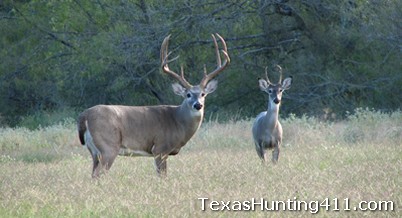The white-tailed deer hunting season may be months away, but that does not stop hunters and landowners from pondering deer management issues. One of the most talked about management practices involves the culling or selective removal of bucks from the herd. There are two reasons to cull bucks. Most hunters cull because they believe that removing inferior bucks allows the more desirable, larger-antlered bucks to breed.
This should allow the better bucks to pass on their genes, and the overall genetic composition of the herd to improve. This makes sense to most hunters, but the facts are not clear. In fact, there has been much discussion, even outright arguments, around the removal of alleged cull bucks, particularly spike bucks. Some well-known whitetail deer researchers even suggest that genetic improvement through culling will not happen in most free-ranging situations.

But genetic improvement aside, the other reason to cull is to simply harvest bucks to manage for the carrying capacity of a property. To some extent, the planned harvest of any buck is considered culling, but the term cull buck still usually refers to bucks with less than desired antler characteristics. If hunters look at culling as a way to keep the deer herd in check with food resources, then from that perspective culling really is a good management practice. But the argument over culling continues…
Source: “What has fueled the debate to some extent is that the research hasn’t always found the same thing. In fact, it has actually caused the rise of two different schools of thought on culling. The Caesar Kleberg Wildlife Research Institute has been involved with two extensive culling research projects. One completed just a few years back was an eight-year study done on the King Ranch. Texas Parks and Wildlife Department (TPWD) designed the project, which was overseen by Mickey Hellickson, then chief wildlife biologist for King Ranch. The study area was low-fence, and researchers had to take into account young buck dispersal and the movement of bucks in and out of their normal home range during the rut.
One of the criticisms of the study was that culling wasn’t intensive enough to make a change. Dr. Randy DeYoung, of the Caesar Kleberg Wildlife Institute, disagrees. He says that while certain parameters could not be controlled under low fence, the culling was extensive and intensive. He attributes the lack of progress to the fact that with culling alone, genetic change is extremely hard to accomplish.
Nonetheless, the results of the King Ranch study led to another intensive culling study. This one, which is now five years in the making and has another five to go, is being conducted on the Comanche Ranch near Carrizo Springs. This study was designed by ranch owner Dan Friedkin and ranch biologist Donnie Draeger. There are three study areas, two high-fenced and one fenced on three sides. Together the study area encompasses more than 25,000 acres.
TPWD biologists designed the most intensive of the two culling treatments; the third area is a control with no culling. On the King Ranch study the culling was done the old-fashioned way, by gun. However, on the Comanche study, culling is done via helicopter capture. All bucks captured are measured for a host of different parameters. Those that don’t meet the culling criteria, which by most standards would be considered extremely strict, are euthanized; those that do are tagged and released.”
By any account, it would seem that culling via helicopter would have to be intense enough to see noticeable change, right? Well, despite their efforts, after five years researchers have yet to show any real genetic improvement in whitetail bucks in the treatment areas. They plan on continuing the project into the future, but regardless of what they find, many hunters and managers may find that five years of intensive culling is proof enough that culling bucks as a deer management technique does not work. Deer season is still several months away, so just a little something to think about as you’re filling feeders this summer.